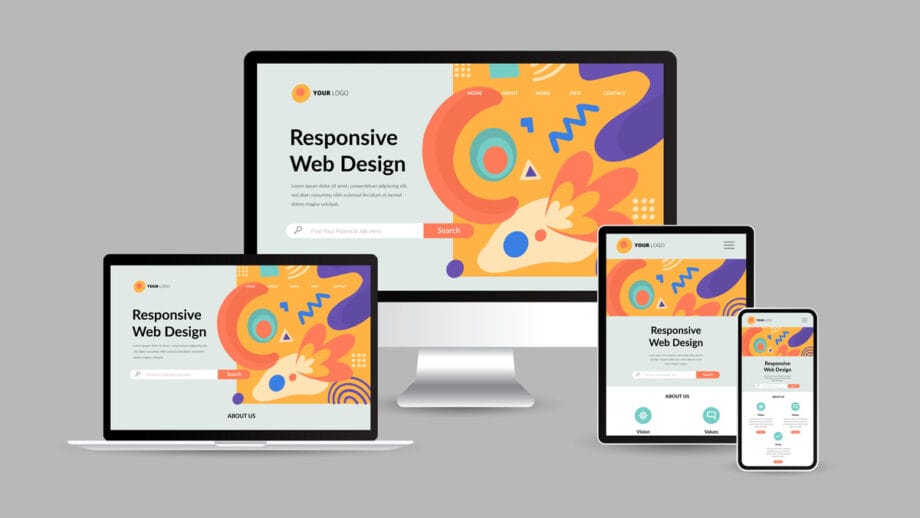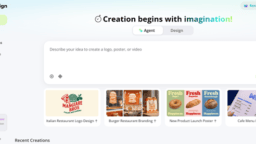Your homepage is the first thing people see when they visit your website. Those first few seconds matter; visitors will either stay and learn more about you, or they’ll leave and check out your competitors instead.
Whether you run a web design agency or you’re a business owner looking for web design services, knowing what makes a good homepage can help you stand out. Your homepage works around the clock to show people who you are and what you do. When you get it right, visitors will stick around and become customers. When you get it wrong, you might not get another chance.
This blog will walk you through what really matters when designing a homepage, giving you tips you can actually use and ideas that work.
Understanding the Purpose of Website Homepage Design
Your homepage is like the front door to your business. It should welcome people in, tell them what you’re about, and show off your brand. When you get your homepage right, visitors will want to stick around and might even become customers. Good web design can actually boost your sales by making your site look better and work better. Web design experts say people make up their minds about your site in just a few seconds. So you need to make those seconds count.
Your homepage’s primary goal is to get your message across fast and clear. Don’t stuff it with too much information; instead, keep things simple. Use words that are easy to understand and make sure people can quickly see what makes you special. Custom website design companies always talk about having a clean layout that naturally leads people’s eyes to what matters most.
13 Key Elements for an Effective Website Homepage Design

Streamlining Your Homepage Navigation
Effective homepage navigation can turn visitors into customers and keep people from leaving your site right away. To help users find what they’re looking for, make sure your navigation menu is easy to understand and use.
Set up your menu items in a way that makes sense, with clear labels and simple organization. Limit the number of choices to prevent overwhelming users. Adding a search bar can also help navigation by letting visitors quickly find exactly what they want.
Clear and Concise Headline
As we talked about earlier, a website has just seconds to show visitors what it’s worth, and this is where the headline plays a crucial role. Though it’s just a few words, it’s one of the most important parts of your website.
Your visitors will come from various backgrounds, so it’s hard to find a headline that works for everyone. Instead, focus on those most likely to benefit from your product.
To create a strong headline, you must understand your target audience. Knowing who you are trying to reach ensures you write an engaging copy that grabs their attention.
Trying to appeal to everyone can dilute your message and make potential customers lose interest.
Keep your headline simple and think about what your audience needs. Use direct language, such as “you” or “your.” For example: “Boost Your Sales With Expert Web Design Services.”
Crafting Effective Sub-Headlines
A headline and sub-headline work together to deliver a clear message to your website visitors, helping them quickly understand your business and increasing conversion chances.
The sub-headline extends the headline by providing more detail and emphasizing your value. For example, a web design agency might use a headline like “Transform Your Online Presence” and a sub-headline like “Our expert web design services solve your website challenges and drive business growth.”
Address common problems your audience faces and position your offering as the solution.
Set up your headings the right way in your page editor. Use H1 for your main page title (just once per page) and then use the other headings in order (H2, H3, and so on). This makes your page easier to read and helps with SEO, too.
First Calls-to-Action
Your homepage should encourage visitors to explore your site and help them through the buying process. Place two to three calls-to-action (CTAs) above the fold, directing visitors to different stages of their journey. Make sure these CTAs are easy to spot and visually appealing.
Use contrasting colors for your CTAs to make them stand out while still matching your overall design. Keep the text short and action-oriented, no more than five words. For example: “Sign Up,” “Book Now,” or “Get Started.”
The Power of Visuals on Your Homepage
So, what else should your homepage feature? High-quality images, of course!
Visual elements are important for keeping visitors interested and stopping them from getting tired of reading too much text. Use videos and images that support the story you want to tell about your business.
Select high-quality visuals that highlight your products or show people using your services. Scale images correctly so they don’t overshadow other content on your page.
Add alt text to images for better accessibility. This helps users understand the image’s relevance, even if it doesn’t load, and also boosts your search engine optimization (SEO).
When you follow these tips, which custom website design companies always recommend, your pictures and videos will make your site better for visitors and help get your message across clearly.
Following these practices, often recommended by custom website design companies, ensures your visuals enhance user experience and effectively communicate your message.
Engaging Content
Besides visuals to keep visitors on your site longer and encourage further exploration, give them content that’s interesting and useful. Offer valuable information that addresses your audience’s needs and interests. Blog posts, videos, and infographics are smart ways to share this kind of content.

Consistent Branding
Maintain consistent branding across your homepage to strengthen your brand identity. Use a cohesive color scheme, typography, and imagery that align with your brand. This makes you look professional and trustworthy, helping visitors feel confident in your business.
Clearly Communicating What You Offer
The information on your website really matters for getting visitors to stick around and look at more pages. Whether you sell clothing, repair HVAC systems, or offer productivity software, you need to clearly explain what you do so people can figure out if what you offer is right for them.
Highlighting the Benefits
It’s crucial not just to explain what you do, but also to show why it matters. Visitors want to understand the benefits of choosing your product or service, as this is what encourages them to stay on your site.
Keep your text clear and easy to understand. Use simple language that connects with your customers so they can quickly see why your benefits matter and are compelling.
Using Social Proof to Build Trust
Social proof is a powerful way to build trust with your visitors. Even if your product or service is top-notch, people are more likely to believe it when they hear it from others. Showcase a few of your best short quotes or testimonials on your homepage.
Linking to detailed case studies can provide additional proof. Including names and photos with these testimonials adds credibility.
Display these elements on your homepage, and don’t forget to highlight any awards or industry recognition you’ve received.
Responsive Design
With the increasing use of mobile devices, having a responsive design is no longer optional. Ensure your homepage looks great and functions well on all devices, including smartphones, tablets, and desktops. A web design agency near you can help make your site work perfectly on all different screen sizes.
Adding Secondary Calls-to-Action
Include secondary CTAs on your homepage to provide additional options for visitors who may not be ready to commit to your primary offer. These act as a backup plan, giving visitors an alternative path if they’re not yet ready for a high-commitment action.
Place your primary CTAs above the fold, but position secondary CTAs further down the page. This way, visitors who scroll will still find opportunities to engage with your site.
Key Features
Along with the benefits, point out some of your main features. This helps visitors understand what your products or services offer. Keep the descriptions clear and easy to follow, making it easy for people to grasp the important details quickly.
How Enhancing User Experience Can Help Avoid Bounce Rate

- Fast Loading Times: A slow-loading homepage can frustrate users and lead to high bounce rates. Optimize your site’s performance by compressing images, leveraging browser caching, and minimizing the use of heavy scripts. Aim for a loading time of under three seconds.
- Accessibility: Your homepage should be accessible to everyone, including people with disabilities. Follow the Web Content Accessibility Guidelines (WCAG) to make your site usable for all visitors. This includes using alt text for images, ensuring sufficient color contrast, and making your site navigable by keyboard.
Conclusion
Now that you understand the key elements to include on your homepage, it’s time to create one that attracts more traffic, keeps visitors engaged, and drives conversions. A thoughtfully designed homepage will help you reach these goals.
Unsure how to begin with your homepage design? Search for a “web design agency near me” to find expert web design services that can guide you in crafting an effective and professional homepage.






